Gloria
-
Ships in 1 to 2 weeks
Details
Description
SKU: CF.BL1064
Composed by Noah Reese. Fold. OCTAVO. 8 pages. Duration 1 minute, 20 seconds. BriLee Music #BL1064. Published by BriLee Music (CF.BL1064).UPC: 680160911752. 6.875 x 10.5 inches. Key: D major. Latin. Traditional Latin.
The Latin text used in this piece has been used in a wide variety of melodies as early as the second century. Taken from a hymn, it begins with the words the angels proclaimed when the shepherds heard of the birth of Christ. Canons are great for teaching part singing, and the canon in Gloria is based on the descending major scale, which can be hard to tune, especially for younger singers. Before the canon occurs each time, the melody is presented in unison, giving singers a chance to center themselves and lock into the tuning. Be intentional to give emphasis to the big beats in 6/8 (compound) meter, not the pulses, as this will provide more lilt and direction to the musical phrase. Dynamics play an important part in this piece, so it is important to really lean into them, especially the surprise at the end. Translation: Gloria in excelsis Deo Glory to God in the highest Glorificamus te We glorify you Adoramus te We adore you.
The Latin text used in this piece has been used in a wide variety of melodies as early as the second century. Taken from a hymn, it begins with the wordsA the angels proclaimed when the shepherds heard of the birth of Christ. Canons are great for teaching part singing, and the canon in Gloria is based on the descending major scale, which can be hard to tune, especially for younger singers. Before the canon occurs each time, the melody is presented in unison, giving singers a chance to center themselves and lock into the tuning. Be intentional to give emphasis to the big beats in 6/8 (compound) meter, not the pulses, as this will provide more lilt and direction to the musical phrase. Dynamics play an important part in this piece, so it is important to really lean into them, especially the asurprisea at the end. Translation: Gloria in excelsis DeoA A A A A A Glory to God in the highest Glorificamus teA A A A A A A A A A A A We glorify you Adoramus teA A A A A A A A A A A A A A A We adore you.
The Latin text used in this piece has been used in a wide variety of melodies as early as the second century. Taken from a hymn, it begins with the words the angels proclaimed when the shepherds heard of the birth of Christ. Canons are great for teaching part singing, and the canon in Gloria is based on the descending major scale, which can be hard to tune, especially for younger singers. Before the canon occurs each time, the melody is presented in unison, giving singers a chance to center themselves and lock into the tuning. Be intentional to give emphasis to the big beats in 6/8 (compound) meter, not the pulses, as this will provide more lilt and direction to the musical phrase. Dynamics play an important part in this piece, so it is important to really lean into them, especially the "surprise" at the end. Translation: Gloria in excelsis Deo Glory to God in the highest Glorificamus te We glorify you Adoramus te We adore you.
The Latin text used in this piece has been used in a wide variety of melodies as early as the second century. Taken from a hymn, it begins with the words the angels proclaimed when the shepherds heard of the birth of Christ. Canons are great for teaching part singing, and the canon in Gloria is based on the descending major scale, which can be hard to tune, especially for younger singers. Before the canon occurs each time, the melody is presented in unison, giving singers a chance to center themselves and lock into the tuning. Be intentional to give emphasis to the big beats in 6/8 (compound) meter, not the pulses, as this will provide more lilt and direction to the musical phrase. Dynamics play an important part in this piece, so it is important to really lean into them, especially the "surprise" at the end. Translation: Gloria in excelsis Deo Glory to God in the highest Glorificamus te We glorify you Adoramus te We adore you.
The Latin text used in this piece has been used in a wide variety of melodies as early as the second century. Taken from a hymn, it begins with the words the angels proclaimed when the shepherds heard of the birth of Christ.Canons are great for teaching part singing, and the canon in Gloria is based on the descending major scale, which can be hard to tune, especially for younger singers. Before the canon occurs each time, the melody is presented in unison, giving singers a chance to center themselves and lock into the tuning.Be intentional to give emphasis to the big beats in 6/8 (compound) meter, not the pulses, as this will provide more lilt and direction to the musical phrase.Dynamics play an important part in this piece, so it is important to really lean into them, especially the “surprise” at the end.Translation:Gloria in excelsis Deo Glory to God in the highestGlorificamus te We glorify youAdoramus te We adore you.
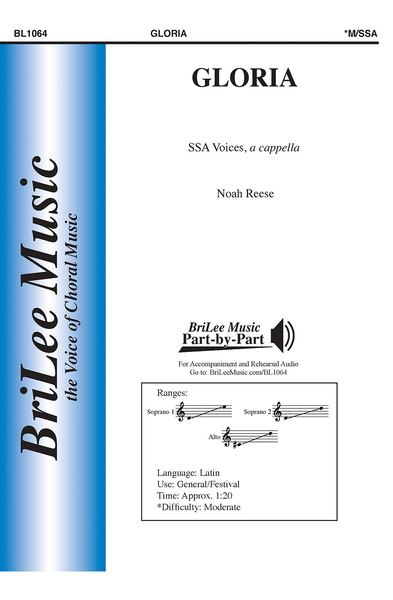
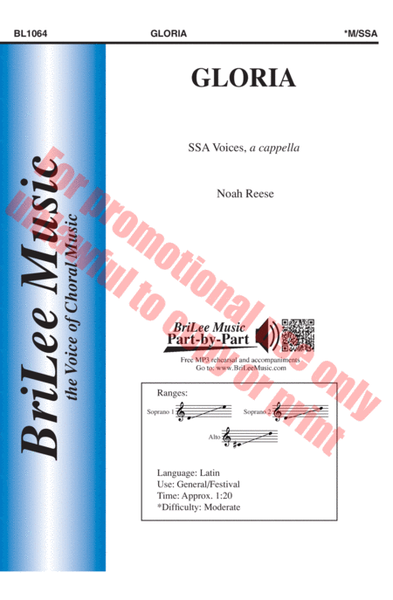
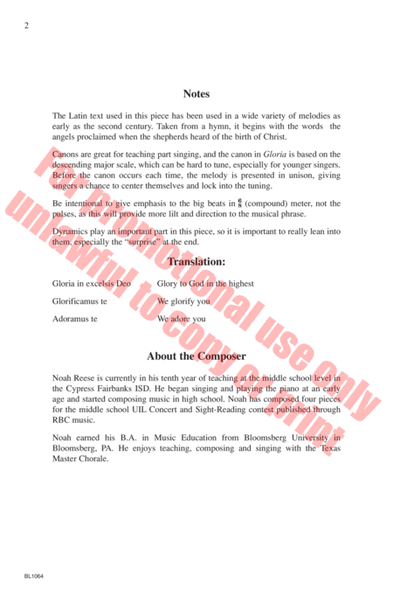
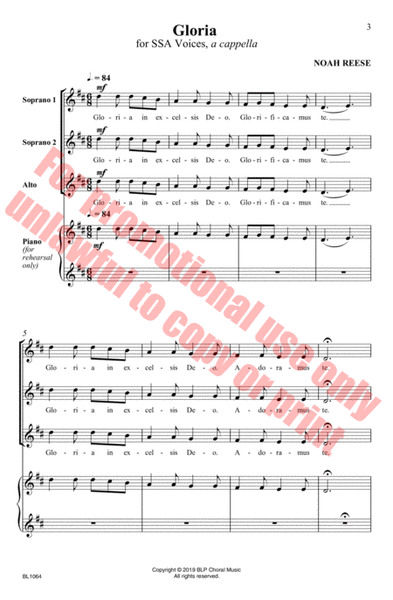
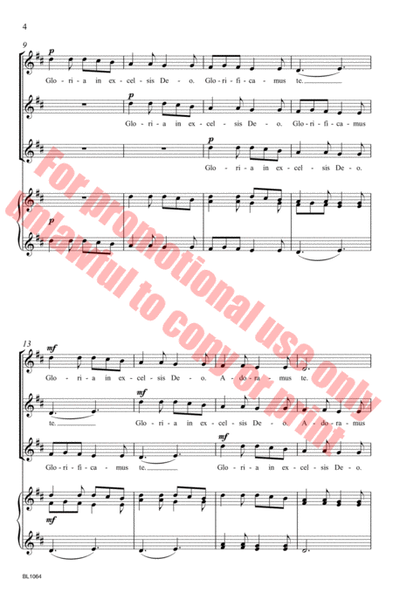

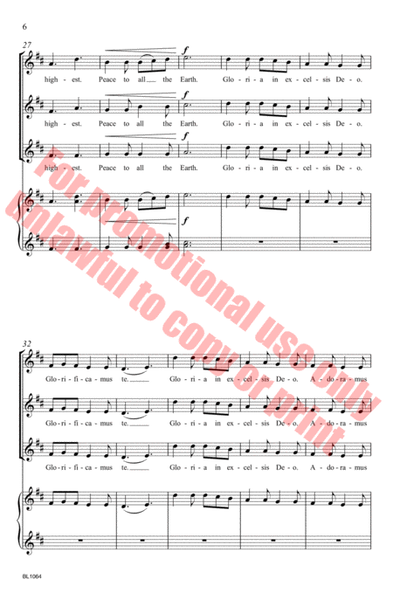
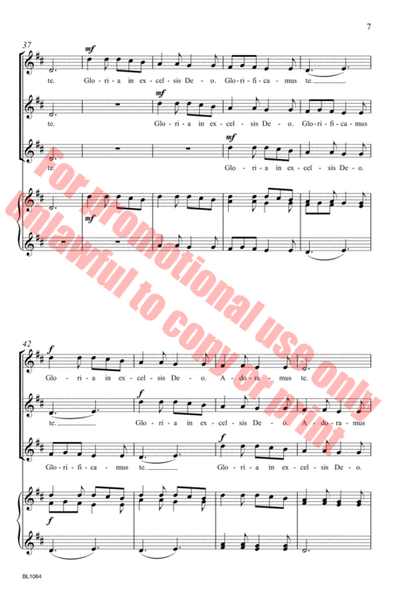
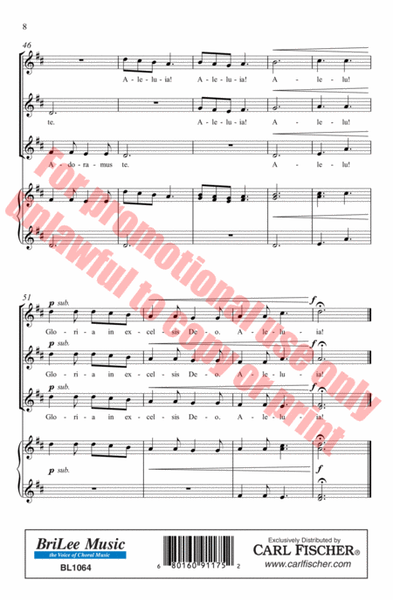
 Share
Share